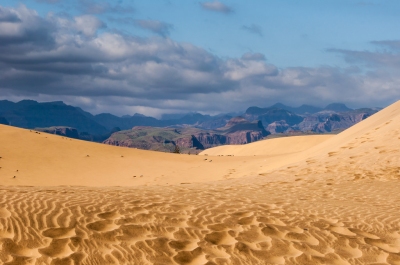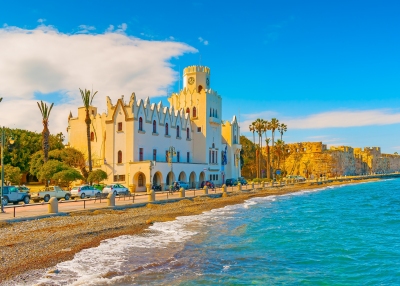![Florence - Ponte Vecchio (Patrick S.) [flickr.com] CC BY
License Information available under 'Proof of Image Sources' Florence - Ponte Vecchio (Patrick S.) [flickr.com] CC BY
License Information available under 'Proof of Image Sources'](/wp-content/uploads/reiseziele/florence---ponte-vecchio934.jpg)
Florence is the capital of Tuscany in central Italy and, with around 380,000 inhabitants, the most populous city in the Italian region. It lies about 230 km northwest of Rome and is surrounded by rolling hills where wine and fruit grow. The city was founded as a Roman military colony around the 1st century BC.
Throughout its long history, it has been a republic and seat of the Duchy of Tuscany and has experienced religious and republican revolutions. In the 15th and 16th centuries, Florence was one of the richest cities in Europe, considered the centre of trade and finance. During this time it was dominated by the powerful Medici family.
The glorious city on the Arno owes its fame to numerous famous personalities, such as Leonardo da Vinci, Galileo, Michelangelo, Machiavelli and Dante, who have shaped it with unique works of art and architectural marvels. Florence is home to the world’s largest collection of universally known works of art. The historic old town has been a UNESCO World Heritage Site since 1982 and is visited by millions of tourists every year.
Below we present you the most exciting tours, the most beautiful attractions and the best sights in Florence:
1. Cathedral Santa Maria del Fiore
The Gothic cathedral of Florence, the Basilica di Santa Maria del Fiore (also known as “il Duomo”), is the symbol of the city. It was named after the symbol of the city, the lily (Fiore) and dominates the cityscape together with the bell tower (Campanile). The cathedral was built on the site of the former church of Santa Reparata, the remains of which can be seen in the crypt. Its construction began in 1296 and was completed in 1436 with the massive red-roofed dome.
The original façade was destroyed in 1587 and only replaced by a Gothic façade in 1864 by Emilio de Fabis. The walls are covered with white, green and pink marble slabs in various shapes. The dome is designed in an octagonal design without load-bearing wooden frames, which was unknown at the time. It was reinforced with horizontal iron chains and is the world’s largest brick dome. To commemorate the great work of Filippo Brunelleschi, there is a statue on the adjoining square that looks down on his creation.
2. Campanile di Giotto
The Campanile di Giotto was built in Piazza del Duomo as a bell tower for the adjacent Cathedral of Florence and is part of the complex of buildings. The Gothic tower was built in 1334 by Giotto, who died in 1337. After his death Andrea Pisano and Francesco Talenti took over the tower until its completion in 1359. The façade consists of hexagonal marble slabs with geometric patterns.
The green, white and red marble comes from Carrara and Siena. The bell tower is divided into different levels and each level houses one of the seven bells of the Campanile. It is 84.7 metres high and can be climbed over 414 steps to get a breathtaking view over the historic old town.
3. The Uffizi
The Uffizi houses the world-famous Florence Art Gallery, which houses the largest collection from ancient Greek sculpture to 18th century Venetian paintings. It is located in the U-shaped Palazzo degli Uffizi, which was built between 1560 and 1580 as the seat of government of the then Duchy of Tuscany.
It was built by the Medici family, who bequeathed the palace and art collection to the town in 1743. The majority of the collection dates from between the 12th and 17th centuries. The museum owns more than 3,100 works of art, of which around 1,700 objects are regularly exhibited.
4. Galleria dell’ Accademia
The Gallery in Piazza San Marco was founded in 1563 by Cosimo de Medici and the three artists as the first European Academy of Painting. Works by Michelangelo, Botticelli, Lippi, Gaddi and Orcagna are exhibited in the rooms. At the heart of the exhibitions is the statue of David by Michelangelo, the original of which sits on a grandstand. Next to it stand the four unfinished statues of his Prigioni (prisoners), which were intended for the tomb of Pope Julius II.
There are also the statue of San Matteo (Matthew) and Giambologna’s sculptures from the robbery of the Sabine nuns. In the adjoining rooms there are other exhibits with top-class paintings from the Florentine Renaissance and a collection of musical instruments from the Medici and Lorraine families. It is one of the most visited sights in Florence.
5. David
The jewel of the art collection and the most famous sculpture in art history is Michelangelo’s depiction of the young warrior David. For the first time he was portrayed not as a young boy, but as a man in his prime. In 1504 the solemn unveiling took place in Piazza della Signora in front of Palazzo Vecchio, which amazed its visitors.
Michelangelo was barely older than 20 years when he began sculpting the 5.17 m high statue in 1501. He made them from a single white block of Carrara marble and worked for four years on the work of art, which shows the smallest details such as the veins of his sinewy arms and leg muscles.
6. Palazzo Vecchio
Palazzo Vecchio is a massive fortified palace surrounded by countless battlements and with a 94 m high tower. It was designed by Arnolfo di Cambio between 1298 and 1314 for the Signoria (city government). Today it houses the mayor’s office and the municipal council.
From the top of the Torre d’Arnolfo (tower) you have an unforgettable panoramic view. Inside, Michelangelo’s sculpture Genio della Vittoria (Genius of Victory) decorates the Salone dei Cinquecento, a magnificent hall with outstanding murals. It was built in the 15th century for the ruling Consiglio dei Cinquecento (Council of 500).
7. Piazza della Signora
Piazza della Signora is surrounded by the most important historic buildings of the old town. Next to the Palazzo della Signora there are the Uffizi, which today house a prestigious museum, the Palace of the Tribunale della Mercanzia, built in 1359, which once served as the site of the Mercanzia Tribunal and now houses the Bureau of Agriculture, and the Palace of the Assicurazioni Generali, built in 1871 for commercial purposes.
Other historical buildings are the Loggia della Signoria, a corner building with high open arches used for public meetings and now used as an open-air gallery, Palazzo Uguccioni, Palazzo dei Mercatanti and Palazzo dei Buonaguisi.
8. Baptistery San Giovanni
The Baptistery of San Giovanni is one of the oldest and most important religious buildings in Florence. It is dedicated to the patron saint of the city, John the Baptist. The present building was erected on the site of a former Roman building from the 1st century. None of the original Roman buildings has been preserved, but the present baptistery dates from the 11th and 14th centuries.
The building was consecrated in 1059 and had to be large enough to accommodate the crowd who attended the semi-annual baptismal ceremony. The octagonal building, built in the Tuscan Romanesque style and covered with white and green marble, has elegant arcades between polygonal columns.
9. Ponte Vecchio
The outstanding Ponte Vecchio is the oldest bridge of the city, which crosses the Arno with three arches. On the bridge there are pastel-coloured houses with small shops selling handicrafts and regional products. Ponte Vecchio is the most picturesque arched bridge, one of the six most impressive bridges in Florence.
It was probably built on a site where the Roman Via Cassia crossed the river with stone columns and wooden planks. Until 1218 it was the only bridge that crossed the Arno. The Roman building collapsed in 1117 and 1333 due to flood damage, so that reconstruction began twelve years later.
10. Palazzo Pitti
Palazzo Pitti is a Renaissance palace built by the banker Luca Pitta in 1458 and later bought by the Medici family. Over the centuries, it served as a residence for various rulers of the city, until the Savoy left it to the state in 1919. The palace is one of the most important sights in Florence.
Today it houses five museums with impressive collections of silver and jewellery, several art exhibitions and a series of rooms that revive the city’s history. A highlight of the palace architecture is the artichoke fountain by Giovanni Francesco. The palace is most enchanting when it shines in strong shades of pink at sunset.
More things to do and activities for your Florence holiday
Best time to visit Florence
We recommend the following months as best time to travel for exploring the attractions and acivities of Florence:
May, June, July, August, September, and October
You can find more information about the weather, including all climate data, on our climate page for Florence.

![IMG_8887 (y.ganden) [flickr.com] CC BY
License Information available under 'Proof of Image Sources'](/wp-content/uploads/reiseziele/img888787941_preview.jpg)
![Florence (Greg_Men) [flickr.com] CC BY
License Information available under 'Proof of Image Sources'](/wp-content/uploads/reiseziele/florence83040_preview.jpg)
![Florence - Ponte Vecchio (Patrick S.) [flickr.com] CC BY
License Information available under 'Proof of Image Sources'](/wp-content/uploads/reiseziele/florence---ponte-vecchio95971_preview.jpg)




